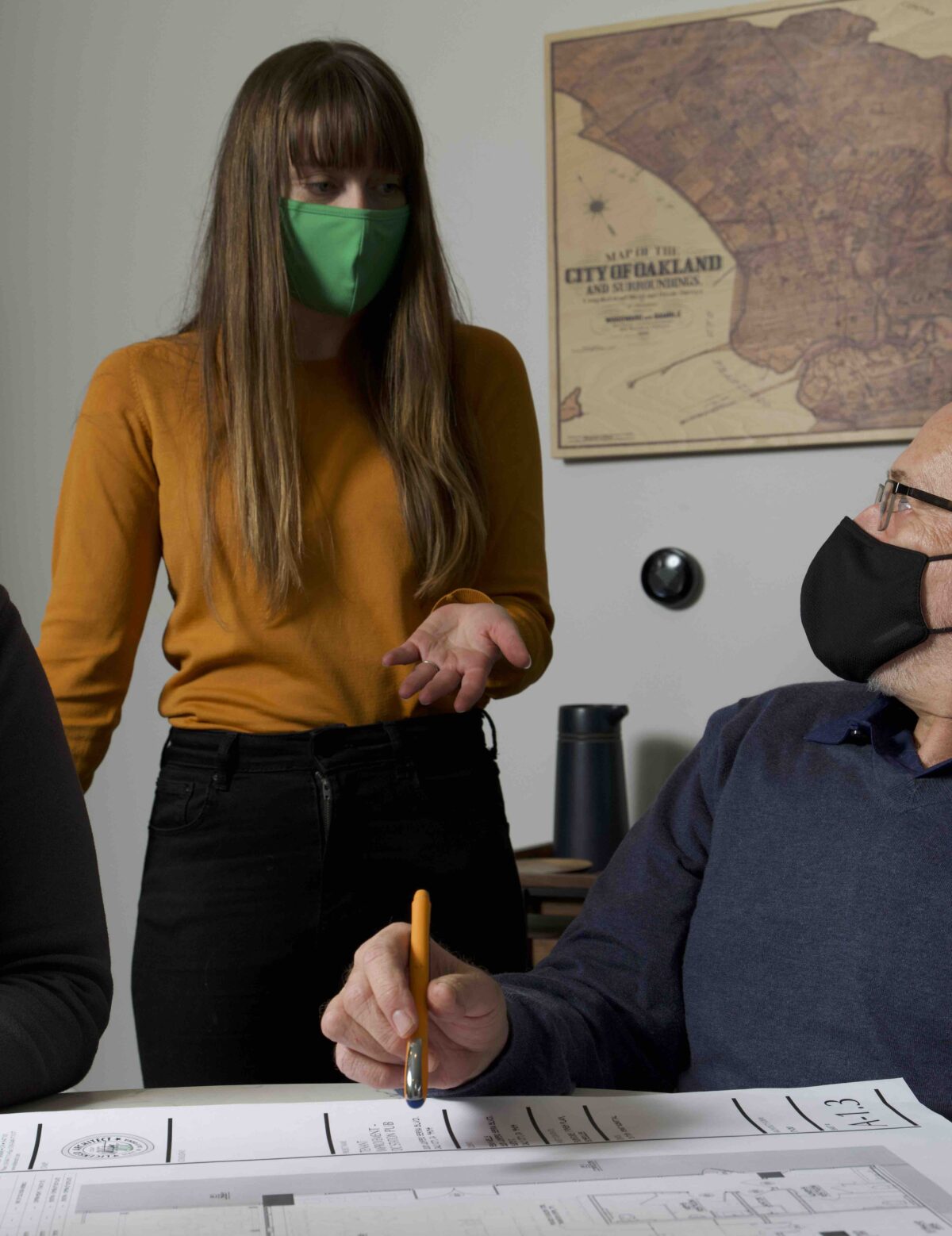A home’s level of accessibility affects each person’s ability to live healthy, meaningful lives. As disability-forward housing advocates, it is important to understand how housing is designed and how it is made accessible. Key topics include: how housing is designed, Building Codes, building codes and the Americans with Disabilities Act (ADA), Universal Design, and Human-centered design.
How is housing designed?
First, the owner of a place getting built decides who will use the building. For example, they can decide to make housing for people going through homelessness. Or, they could make housing for people who work at nearby jobs. That choice gets made based on where the money to build the building will come from. To find out more about how housing is paid for, stay tuned for future resources.
Then, the owner of the place works with an architect. They design the building based on who will use the building. The architect helps the owner design the project. They need to be careful so the project gets allowed by the government. The government makes rules about new buildings. They can decide how high a building can be, how many homes it can have, or what it should look like from the outside. The architect’s job is to make the blueprints for a building that follows these rules and works for everyone.
Building Code
Building Code is a set of rules about making new buildings. These can be things like:
- how electricity gets sent through the building
- how many fire escapes there are
- where different machines (like a transformer) can be put in the building
- what type of plumbing gets used
- What gets used to make the building (like wood, stone, etc)
These codes get made to make sure everyone using the building stays healthy and safe.
Building Code and The ADA
The ADA stands for the Americans with Disabilities Act. The ADA is a law passed in 1990. It protects the rights of people with disabilities. It also made building codes to make sure places are accessible without people having to ask for access first. “ADA compliance” means that a building follows the building code rules in the ADA. It makes sure people with disabilities can use buildings and other spaces. The ADA building codes are also called the “ADA Standards”. They are for any businesses, government buildings, or other public places.
Each state decides whether new apartment buildings need to meet “ADA standards”. In California, new apartment buildings paid for by Low Income Housing Tax Credits are required to meet California’s version of ADA standards.
Universal Design
Universal Design is making buildings and places that everyone can use. It does not matter how old they are, how big or small they are, or if they have a disability or not. Universal Design is more than just following the building codes. Architects need to think about how they can make buildings work well. They have 7 main ideas that they follow to help make this happen.
Human-Centered Design
Human-centered design helps make buildings that meet the needs of people in the community. It works together with people in the community to come up with buildings that work for everyone. There are 3 main steps to human-centered design:
- Listening: Being open to learning from people in the community to make buildings better
- Ideation: Coming up with new ideas, making good ideas better, and getting rid of bad ideas
- Implementation: Working together with community members to bring these ideas to life
Human-centered design makes communities inclusive by listening to the people in them. It works to understand what a community needs, and designs buildings based on those needs. It helps make buildings that work for everyone living there or using them.
This is really important for people with disabilities! We need to have buildings that are accessible to us. Human-centered design lets our voices get heard when buildings get made. We can make sure that buildings get made that work for us!
Credit: This content was originally created for The Kelsey’s Raise the Roof program for leaders with disabilities. Plain language translation from Autistic Self Advocacy Network.

